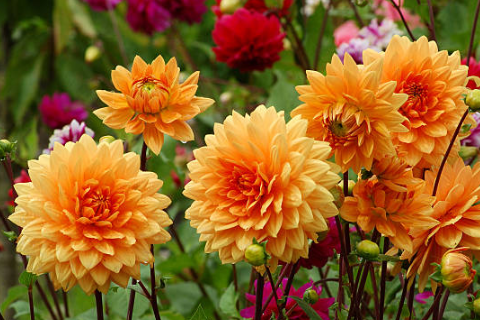Whether you’re growing dahlias in pots or planting them in large garden beds, their bold, beautiful blooms are sure to capture your heart. To get the most flowers and extend the blooming season, there’s one easy trick every gardener should know: deadheading. Here are some helpful tips on when and how to deadhead dahlias properly so you can keep the blooms coming all summer long.
Why Deadheading Dahlias Matters
Like many flowering plants, dahlias bloom as part of their reproductive cycle. Once the flowers fade and petals fall, the plant naturally begins to put its energy into producing seeds. By removing spent blooms before seed formation begins, you redirect that energy into producing more flowers.
Unless you’re saving seeds for next year (which isn’t recommended with hybrid varieties, since they won’t grow true to the parent), there’s no need to let your dahlias go to seed. The plants will still produce tubers, which can be dug up and divided to grow identical plants next season.
Deadheading also keeps your plants looking neat. Spent dahlia blooms often turn brown and droop, giving your garden a messy appearance as the petals fall away.

When to Deadhead Dahlias
Whether you have one dahlia or dozens, the timing of deadheading depends on the variety and maturity of your plants. Not all dahlias bloom at the same rate—some may flower just 75 days after planting, while others can take more than three months. If you’ve purchased potted dahlias from a nursery, they may already be blooming, which means you’ll need to start deadheading early.
As soon as a bloom fades and no longer looks attractive, it’s time to remove it. You don’t have to wait until the petals drop or the flower turns yellow and wilted. Typically, deadheading once a week is enough to encourage continued blooming throughout the season.
Once you start, keep up with this routine until the first frost kills the top growth of the plant.
How to Deadhead Dahlias
Deadheading dahlias is easy, just like with other flowers. All you need is a pair of sharp garden pruners or scissors.
-
Choose a faded bloom and follow the stem down about 12 inches, or even deeper into the plant, and make your cut below the flower head. This encourages strong stem growth. For compact or bedding dahlias, cut back to one or two leaf nodes so the cut isn’t visible.
-
Disinfect your cutting tool between plants. Dahlias are prone to bacterial, viral, and fungal diseases, which can easily spread from one plant to another. Use a 10% bleach solution (one cup of bleach to nine cups of water) or wipe with 70% rubbing alcohol.
-
Collect the spent flowers and toss them in your compost bin—unless the plant is diseased, in which case, dispose of it with your yard waste.
Frequently Asked Questions
• Should I pinch back my dahlia plants as they grow?
Yes. Pinching dahlias means removing the top of the main stem once the plant is about 10–12 inches tall. This encourages the plant to branch out and grow more stems, resulting in fuller plants. Pinching is especially helpful for tall or large varieties. Unpinched dahlias may produce thick broomstick-like stems that are less suitable for cutting.
• Why aren’t my dahlias blooming?
While lack of sunlight can delay blooming, the more likely reason is that your dahlias just aren’t mature yet. Early bloomers like ‘Amber Queen’ flower in about 75 days, while later varieties like ‘Café au Lait’ can take up to 120 days to bloom. If your plant is healthy and getting plenty of sunlight, just be patient—the blooms are worth the wait.

